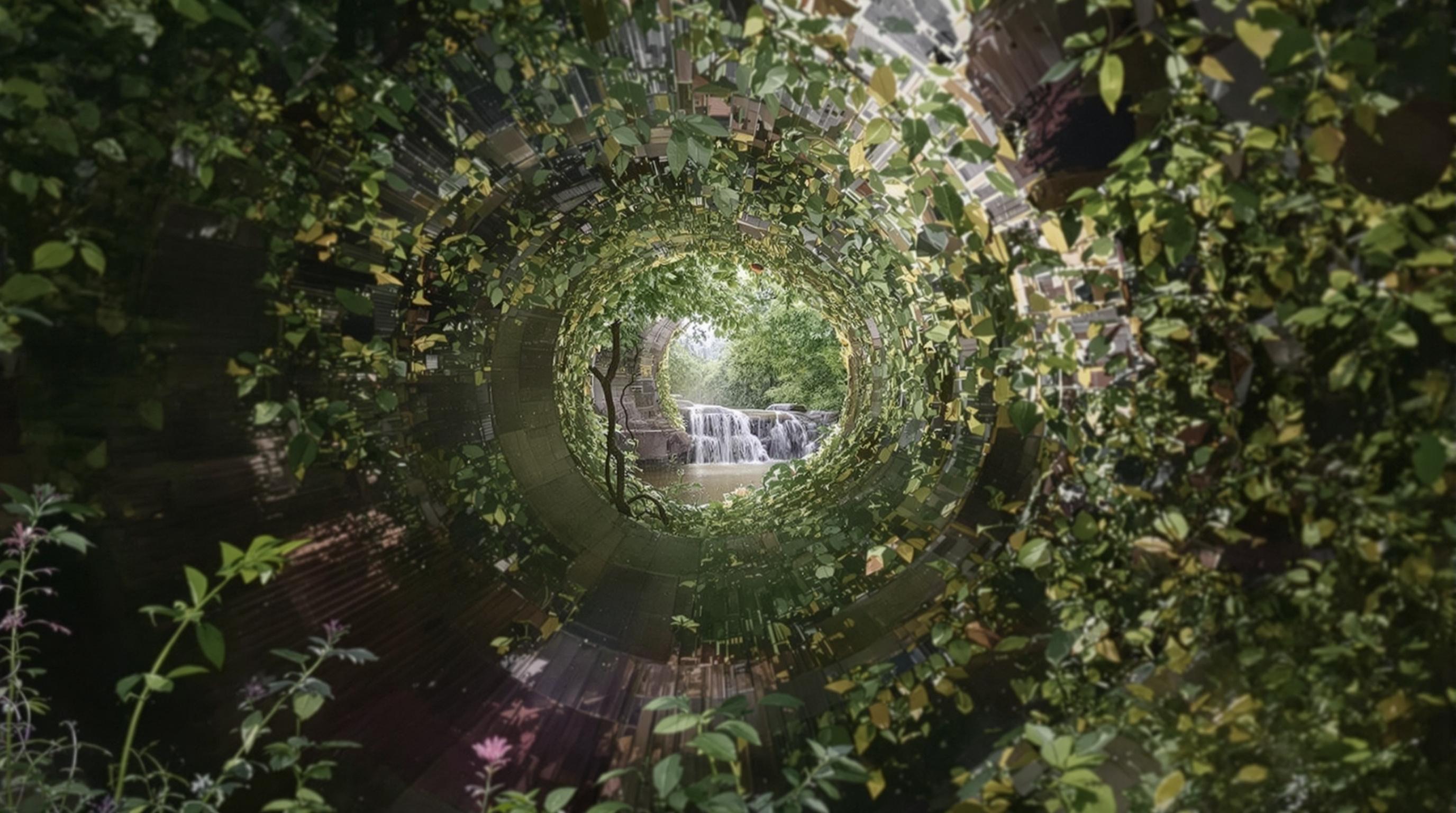Related Articles
- Unconventional Wisdom: Exploring Surprising Influencers Shaping Consumer Trends in 2023's Niche Ecosystems
- Beneath the Surface: Discovering the Unlikely Impact of Micro-Communities on 2023's Consumer Landscape
- Unexpected Catalysts: Exploring the Surprising Forces Influencing Subculture Trends in 2023
- Unmasking Influences: The Unlikely Narratives Behind Today's Obscure Market Trends and Consumer Choices
- The Paradox of Generosity: How Giving Can Lead to Unexpected Financial Gains in Competitive Markets
- The Unexpected Cost of Silence: How Communication Gaps Drain Resources in Organizations
12 Uncharted Case Studies: Revealing Unique Trends Shaping 2023's Evolving Aesthetic Market Dynamics and Consumer Behavior
12 Uncharted Case Studies: Revealing Unique Trends Shaping 2023's Evolving Aesthetic Market Dynamics and Consumer Behavior
12 Uncharted Case Studies: Revealing Unique Trends Shaping 2023's Evolving Aesthetic Market Dynamics and Consumer Behavior
1. The Rise of Eco-Conscious Consumerism
In 2023, a noticeable shift in consumer behavior has emerged, driven by a growing awareness of environmental issues. More consumers are opting for brands that prioritize sustainability over sheer profit. This rise in eco-conscious consumerism has led many companies to reevaluate their production methods, packaging, and supply chains to align with the values of their target audience.
Case studies show that brands like Patagonia and Allbirds have successfully capitalized on this trend by promoting their eco-friendly practices. Patagonia’s “Buy Less” campaign, for instance, encourages consumers to consider the environmental impacts of their purchases, while Allbirds prides itself on using recycled materials and carbon-neutral production.
Research indicates that consumers are willing to pay a premium for sustainable products, reinforcing the importance of transparency and impact in marketing strategies (Nielsen, 2023). Companies must now communicate their environmental initiatives clearly to build trust and loyalty among their eco-conscious clientele.
2. Nostalgia Marketing’s Continuum
Nostalgia marketing has taken on new dimensions in 2023, with brands tapping into childhood memories and past trends to connect with consumers emotionally. This tactic not only evokes feelings of warmth but also creates a sense of community among those sharing similar experiences. Brands leveraging nostalgia have managed to capture the attention of both older and younger demographics.
Take for instance Coca-Cola’s revival of retro packaging and flavors, which has resulted in a remarkable uptick in sales amongst millennials who fondly remember childhood Coca-Cola classics. Similarly, brands like LEGO have re-released beloved products that appeal to both young LEGO enthusiasts and adults wishing to relive their childhood.
By stimulating a shared emotional experience, nostalgia marketing can transcend the transactional relationship consumers have with brands. A study by Event Marketer (2023) found that products marketed with nostalgic themes demonstrate 50% higher engagement rates, underscoring the power of visual storytelling from the past.
3. Minimalist Design: Aesthetic or Necessity?
Minimalism continues to dominate aesthetic trends in various industries, but in 2023, it has evolved from a mere design choice to a necessity in many consumers' lives. Amidst increasing digital clutter and fast-paced environments, individuals are craving simplicity and functionality.
Brands like Muji and Apple embody this minimalist philosophy, promoting clean lines, neutral colors, and user-friendly interfaces. Their appeal lies in the notion that less is more, allowing consumers to focus on quality over quantity. This trend has prompted a surge in products designed to reduce complexity, from smart home devices to multifunctional gadgets.
Moreover, psychological studies have shown that consumption choices reflecting minimalism can lead to reduced stress and anxiety (American Psychological Association, 2023). As consumers seek tranquility in their purchasing habits, minimalist design principles serve to cater to this demand by simplifying choices and fostering a more serene lifestyle.
4. The Shift Toward Personalization
Consumer expectations in 2023 continue to lean toward personalization, with brands stepping up their game to create tailored experiences. Personalized marketing strategies enhance customer satisfaction and foster loyalty, as consumers feel recognized and valued by brands that cater to their individual needs and preferences.
Companies like Nike have embraced this trend through customizable products, empowering consumers to design their own shoes. Similarly, Netflix uses data-driven algorithms to personalize content recommendations, making the viewing experience highly specific to individual tastes.
As personal data privacy concerns mount, brands must navigate the delicate balance of effectively leveraging consumer data while respecting privacy boundaries. A report by McKinsey (2023) shows that personalization leads to increased conversions and engagement, highlighting the necessity of innovation in personalized marketing approaches.
5. The Influence of Social Media on Aesthetics
Social media’s role in shaping aesthetic trends has never been more pronounced than in 2023. Platforms such as Instagram and TikTok are the driving forces behind trends, allowing influencers to dictate the prevailing styles and aesthetics with a single post. The importance of visual appeal on these platforms has led to an increased emphasis on curation and branding.
Brands that harness social media effectively can create viral moments, elevating their products seemingly overnight. Companies like Glossier have built their reputations on cultivating a strong social media presence, driving user-generated content that resonates with their audience. This user-centric strategy fosters authentic engagement, making the brand feel more relatable.
According to research from eMarketer (2023), advertisers are projected to allocate nearly a quarter of their budgets to social media marketing. This trend emphasizes the need for brands to continuously adapt to the fast-paced social landscape in order to maintain relevance and appeal to their target demographics.
6. Health and Wellness Aesthetics
As consumers increasingly prioritize health and wellness in their lifestyles, aesthetic choices are reflecting this shift. Aesthetic markets have seen a surge in products that promote well-being, confidence, and self-care, leading to the rise of “wellness aesthetics.”
Brands like Lululemon and Aesop have effectively merged fashion and well-being, creating designs that not only look good but feel good as well. This approach has led to an increase in products, ranging from activewear to skincare that embrace clean ingredients, holistic practices, and mindful consumption.
With wellness as a focus, consumers are gravitating toward brands that advocate a balanced lifestyle. The global wellness market is projected to reach $7 trillion in 2023 (Global Wellness Institute, 2023), indicating that aesthetics grounded in health and wellness are becoming crucial for manufacturers aiming to tap into this lucrative sector.
7. AI-Driven Design and Consumer Interactions
Artificial Intelligence (AI) is swiftly transforming aesthetic dynamics by enabling brands to enhance consumer interactions and streamline design processes. In 2023, AI tools are often integrated into design workflows, assisting brands in predicting trends and consumer preferences.
Companies such as Stitch Fix are utilizing AI algorithms to analyze customer data and recommend personalized clothing items, revolutionizing the retail experience. Brands can create data-informed designs that align with market demand, minimizing waste and maximizing consumer satisfaction.
The adoption of AI-driven technologies has also fostered engaging and interactive experiences. Virtual try-ons and augmented reality applications have become increasingly popular, allowing consumers to experience products in innovative ways. As AI continues to advance, brands that leverage these technologies stand poised to remain at the forefront of the evolving market landscape.
8. The Fast-Paced Resurgence of Vintage Aesthetics
While trends evolve, 2023 has welcomed the resurgence of vintage aesthetics, characterized by a mix of old-school charm and modern twists. The cyclical nature of fashion continues to see retro styles making a comeback, influenced by cultural nostalgia and the desire for authenticity.
Brands are strategically blending vintage elements into contemporary styles, ensuring that products resonate with the current generation while connecting with the past. Retailers such as Urban Outfitters and Reformation have successfully integrated vintage vibes into their apparel, creating products that appeal to an audience searching for uniqueness.
As sustainability becomes paramount, the popularity of thrift shopping and second-hand markets has surged. Thrift stores and platforms like Depop have gained traction among younger consumers, promoting sustainability while catering to a desire for exclusive vintage finds. This trend not only showcases individuality but also challenges fast fashion norms.
9. Inclusivity: The Changing Landscape of Branding
In 2023, the concept of inclusivity has become a cornerstone for aesthetic branding and consumer engagement. Brands that prioritize inclusivity reflect a societal shift, recognizing that diverse representation fosters stronger connections with consumers. This evolving landscape demands that brands rethink how they approach design, marketing, and communication.
Companies like Fenty Beauty and Savage X Fenty have demonstrated that inclusivity is not just a marketing strategy but an essential part of brand identity. By offering diverse product lines that cater to various skin tones and body types, these brands are leading the charge in reshaping expectations and sparking conversations around representation.
The impact of inclusivity on consumer behavior is profound, as research indicates that 67% of consumers feel more positive about brands that embody diversity (Deloitte, 2023). This statistic highlights the necessity for brands to actively engage with inclusivity to maintain a competitive edge in the ever-evolving market.
10. The Emergence of Experiential Retail
As e-commerce continues to rise, brick-and-mortar stores in 2023 are evolving into immersive experiences that engage consumers on multiple sensory levels. This shift has led to a reimagining of traditional retail spaces, where the focus is on creating memorable experiences that go beyond mere transactions.
Brands like Apple and Nike have pioneered experiential retail, integrating technology and design to make shopping a thinking and feeling endeavor. Interactive installations, personalized customer service, and immersive storytelling are used to create unforgettable experiences that consumers are eager to share on social media.
Reports indicate that 78% of consumers prefer shopping in stores that offer engaging experiences (Forbes, 2023). As a result, brands are compelled to innovate continually, understanding that creating a meaningful connection between consumers and products can significantly enhance loyalty and drive sales.




